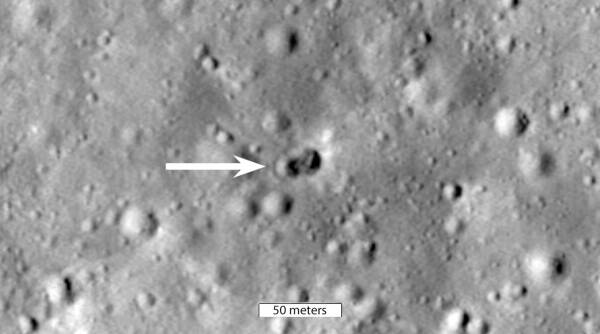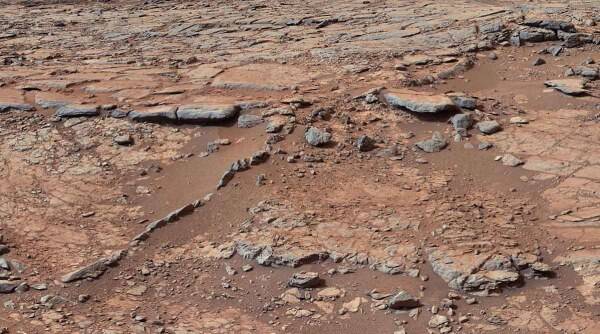On June 28, NASA successfully launched the CAPSTONE project, which is the first step forward towards paving the way for the Artemis missions that will put astronauts back on the moon after a gap of 50 years. But that is just one development that happened last week. Here, we have put together some of the most exciting space news that happened over the previous week for you in case you missed it.
NASA launched CAPSTONE to pave the way for the moon
A small spacecraft launched on June 28 from New Zealand as part of the CAPSTONE mission. It contained a CubeSat satellite about the size of a microwave. Its objective is to reduce the risk for future spacecraft by testing out innovative navigation technologies and a new halo-shaped orbit that could be used by a space station orbiting the moon in the future.
The mission carries a dedicated payload flight computer and radio that will perform calculations to determine whether the CubeSat is in its intended orbital path. It will NASA’s Lunar Reconnaissance Orbiter (LRO) as a reference point. The idea here is that it will communicate directly with LRO and use the data obtained from this crosslink to measure how far it is from LRO and how fast the distance between the two changes, helping it determine its position in space.
 The CAPSTONE mission will test a new orbit. (Image credit: NASA)
The CAPSTONE mission will test a new orbit. (Image credit: NASA)
NASA will use this to evaluate CAPSTONE’s autonomous navigation software called Cislunar Autonomous Positioning System (CAPS). Once successfully tested, the software could potentially allow future spacecraft to determine their location without having to rely exclusively on Earth-based tracking.
The orbit that it is testing, called a near rectilinear halo orbit (NRHO), is very elongated and its location is at a precise balance point between the gravities of the Earth and the moon. This orbit could offer stability for long-term missions like Gateway, a planned space station that will orbit the moon, and will require minimal energy to maintain. Once deployed, Gateway will serve as an ideal staging position for missions to the Moon and beyond.
An unusual impact site on the Moon from an unknown rocket
NASA’s LRO had spotted an unusual “double crater” on the Moon: an 18-metre-diametre eastern crater superimposed on a 16-metre-diameter western crater. The unexpected double crater formation indicates that whatever rocket caused it had large masses at each end, which is unusual because spent rockets typically have the mass concentrated at the motor end with the rest of the rocket stage consisting of an empty fuel tank.
No other rocket impacts on the Moon have created double craters as far as NASA scientists know. The four craters created by the third stage of the Saturn rockets (from Apollo 13, 14, 15 and 17) were irregular in outline and were substantially larger, with most being larger than 35 metres in diameter.
 The unexpected double crater formation indicates that the rocket body had large masses at each end, which is unusual. (Image credit: NASA/Goddard/Arizona State University)
The unexpected double crater formation indicates that the rocket body had large masses at each end, which is unusual. (Image credit: NASA/Goddard/Arizona State University)
Researchers at the University of Arizona’s Space Domain Awareness lab at the Lunar and Planetary Observatory believe that the double crater was caused by a Chinese booster from a rocket launch in 2014. But NASA still refers to the impact crater ass having been created by a “mystery rocket”.
Using Curiosity rover data to measure key life ingredient on Mars
Using data from NASA’s Curiosity rover, scientists are measuring the total organic carbon in Martian rocks for the first time ever. There is evidence that the red planet’s climate was similar to Earth’s billions of years ago; with a thicker atmosphere and liquid water that flowed into rivers and seas. If life ever existed on Mars, scientists believe that the sites of these ancient water bodies would be the best place to look for signs. Organic carbon is an important component of life molecules.
The Curiosity rover went to the Yellowknife Bay formation in the Gale crater on Mars, which is the site of an ancient lake on Mars, and drilled samples from 3.5-billion-year-old mudstone rocks there. Curiosity then delivered the sample to the Sample Analysis at Mars (SAM) instrument, in which an oven heated powdered rock to progressively higher temperatures. It used oxygen and heat to convert organic carbon to carbon dioxide.
 A view of the Yellowknife Bay formation of Gale crater, where the Curiosity rover collected samples for analysis. (Image credit: NASA/JPL-Caltech/MSSS)
A view of the Yellowknife Bay formation of Gale crater, where the Curiosity rover collected samples for analysis. (Image credit: NASA/JPL-Caltech/MSSS)
After that, it measured the amount of carbon dioxide so that scientists could later use this data to measure the amount of organic carbon in the rock. This experiment was actually performed in 2014 but it took years of analysis for the scientists to understand the data and put the results in the context of the mission’s other discoveries in the Gale crater. The resource-intensive experiment was only performed once during the Curiosity rover’s 10 years on Mars. Also, the presence of organic carbon doesn’t necessarily point to extra-terrestrial life as there are many non-biological processes that can create it.
NASA wants public help in spotting Martian clouds
The space agency has organised a project called “Cloudspotting on Mars” that uses its citizen science platform Zooniverse. Scientists at NASA are inviting the public to identify clouds on the red planet as part of the project hoping that it will help solve a fundamental mystery about Mars’ atmosphere.
NASA’s Mars Reconnaissance Orbiter has been studying the red planet since 2006 and its Mars Climate Sounder instrument has studied the planet’s atmosphere in infrared light. Teams at NASA are turning to the public for marking “arches” in sixteen years of infrared data. Clouds appear as arches in the data and can reportedly be spotted by human eyes easier than algorithms. Of course, NASA plans to use the crowd-sourced project to train better algorithms that can do this job in the future.
‘Enchanted Lake’ on Mars could be the best spot to look for life on Mars
NASA had shared images of an “Enchanted Lake” on Mars, where scientists believe that the perseverance rover could find the first evidence of extraterrestrial life. The Enchanted Lake is a rocky outcrop where scientists believe water existed in the past. The image was captured by the rover’s Hazard Avoidance Cameras (Hazcams) on April 30 this year.
The image was taken near the base of the Jezero Crater’s delta and provided scientists with the first close-up of sedimentary rocks on Mars. These rocks are usually formed when fine particles carried by water or air are deposited in layers which turn into rocks over time. Scientists believe that water existed in the Enchanted Lake in the past and that there is a chance that it could have harboured life when it did.
